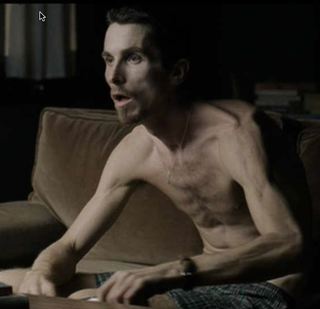In order to understand how a psychological terror/horror film works an understanding of what it is will be needed first , so what is it ? Well many people explain the way they feel when watching the films is a sense of unknowing the films rely on a character fears, guilt, beliefs, and emotional instability to build tension and further the plot. An audience will identify with this character as we all have the same fears and emotions.
Psychological horror is different from the type of horror found in "splatter films," which derive their effects of blood and violence, psycho films make you anxious and calm at the same time using specific lighting camera shots and movements you are able to feel what is coming before you see it like in the cases of the films I have had to watch in this project these include The Shining, The Tenant, the Machinist, Rear window and The Haunting(original).
The first film we watched was The Shining which I reviewed earlier on in the blog in this film the vast use of space gave a sense of isolation and being open to attack these types of shots are very common in this genre but it is as much about the set as the technical features of cameras and lighting. The set has to be simple a common place that we feel comfortable in such as a bedroom ,a hallway or a hotel.The film starts to prepare the viewer for isolation with gliding aerial shots of a deserted winding highway leading to the Overlook Hotel these shots remind me of a snake and the evil that it portrays. Another camera angle that works well in captivating the audience is with the use of a "Stedi-Cam which follows Danny's tricycle as he innocently raced around the halls of the vacant Hotel showing further creepy emptiness to the vast space.

The next film I watched was the Machinist a film I had watched previously and enjoyed The machinist" is about a heavy machine operator played by Christian Bale who suffers from insomnia and has his reality breaking down on him, seeing strange characters, eerie notes on his refrigerator and getting paranoid with all his surrounding seeming to turn against him.'The Machinist' is full of an eerie green light, using coral filters on all the lenses and high-key lighting in most scenes, this style is very similar to that of 'Twin peaks'. The claustrophobic camera angles add to this atmosphere and help to enforce the idea that the machinist is living in his own surreal environment. Similar to that of Jack Nicholson’s character in ‘ the Shining’
Visual attitudes of desertion and desolateness are paralleled with Bale's creepy, disturbing-looking thinness correlated with Reznik's psychological state. Insanity slowly creeps its way in to the film you are running with Christian Bale’s character away from his paranoia and mysterious characters which suggest the end to his existence.
In the film 'Rear Window' the Director Hitchcock was a master of suspense without using gore and graphic violence. He scared us with only a camera and some lights. The suspense in the film is based on the unquestionable logic of terror. The story of L.B. Jefferies, a photographer who has been immobilized while photographing a race car crash. His girlfriend, Lisa wants to marry him and tries to get him to settle down, but he is unwilling to give up his adventurous lifestyle for her own high class lifestyle. Trapped in his apartment, he begins to pry into his neighbors' lives by watching through his window. The words curiosity killed the cat comes to mind. All though not my favourite Hitchcock film his work needs no comment as it speak for his self his use of music and camera angles flow and there is not such a use for dialogue you can even see past the shoddy set's. In Rear Window the gentle yet eerie music coming from the Songwriter apartment set a beautiful scene and the use of different colour filters on the camera lens add to the mood.In conclusion to this, through the use of films many subtle things such as the lightning, camera angle and sound be used to create the suspense and fear empathy and terror needed to create the horror in the viewers mind. Physiological horrors often focus on tragedy, entailing madness, conspiracy, violence and even what we would call tragic people, those that we just simple empathise with like in the Machinist. The main Characters aren’t usually the bad guys at the beginning and unusual change in circumstance will change them. The idea is not to scare you but to make you think your not meant to hide behind a pillow but to be on the edge of your seat in anticipation of what the outcome is to this highly built up storyline.
the image above is from ' The Machinist'
The Shining, Stanley Kubrick 1980
The Machinist ,Brad Anderson 2004
Rear Window, Alfred Hitchcock 1954











